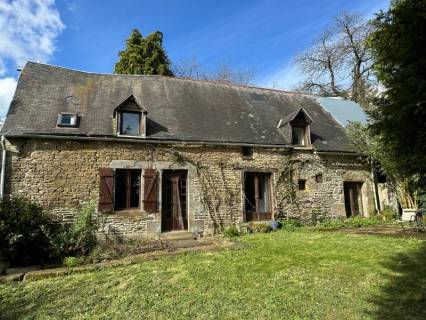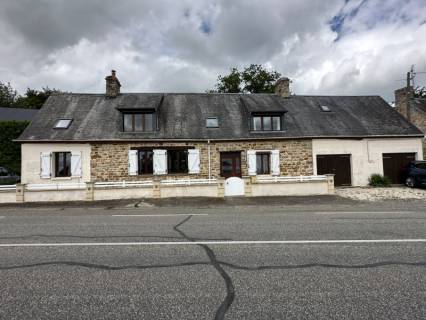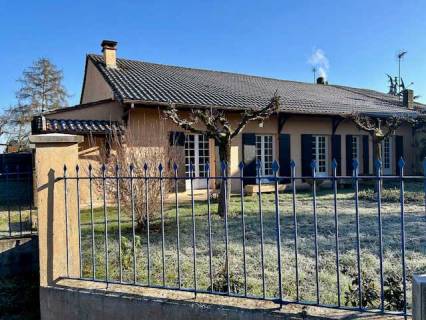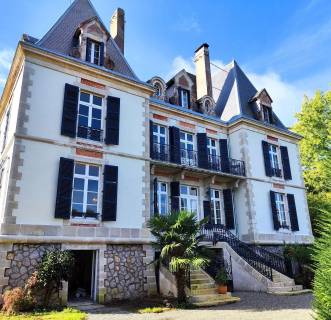Aug 222020

Many film buffs rate the French film industry for being bold and evocative, largely thanks to the Nouvelle Vague movement of the 1950s, which rejected traditional film-making conventions in favour of a more experimental style.
Certain French films, however, can be credited with popularising the locations in which they’re set, introducing new areas both to tourists and house-buyers alike.
Paris and the French Riviera have provided the backdrop to many iconic French films, but other French locations have benefited from their silver screen appearances, too. Let’s take a look at several well-regarded French films, and what makes their locations so special.
Jean de Florette / Manon des Sources – Vaucluse
These two films, both shot in 1986, were directed by Claude Berri and based on the two-volume novel by Marcel Pagnol.
Jean de Florette centres around how two farmers block the water source of their new neighbour’s land in order to make him sell it to them cheaply. In the sequel, Manon des Sources, the neighbour’s daughter realises what happened and takes her revenge.
Both films were shot in and around the Vaucluse department of Provence. While Jean de Florette’s house is located in the tiny village of Vaugines, much of the action was shot in Mirabeau, whose building facades were replaced with painted polystyrene to age them.
Highlights of Vaucluse
The Vaucluse department is situated in north-west Provence and is known for its traditional Provençal villages, such as Vaugines and Mirabeau, beautiful lavender fields and the important historical sites of Avignon and Orange. Its landmark mountain of Mont Ventoux attracts cyclists from around the world. To the south, the Luberon region has lovely villages set against a scenic backdrop of cliffs and rocks, olive trees and ancient farms.
Betty Blue (37°C Le Matin) – Languedoc Rousillon
Shot in 1986 by director Jean-Jacques Beineix, this edgy drama depicts the love story between a thirty-something aspiring writer and a troubled young woman, played by Beatrice Dalle. While much of the drama takes place in Paris, the film opens in the seaside resort of Gruissan, famous for its iconic stilt chalets, located ten miles south-east of Narbonne in Languedoc-Rousillon.
The other French villages used are Marvejols, a tiny market town in the Colagne Valley north of Narbonne and Nogent-sur-Marne, east of Paris.
Cyrano de Bergerac – Languedoc Rousillon
This 1990 comedy-drama directed by Jean-Paul Rappeneau was based on the 1897 play by Edmond Rostand. Famed swordsman and poet Cyrano de Bergerac (Gerard Depardieu) is in love with his cousin Roxane, but, self-conscious of his large nose, has to find an unusual way of indirectly expressing his love.
The sweeping hills and ancient settlements of Languedoc-Roussilon provided much of the backdrop, and several scenes were was filmed in Uzès, one of France’s best-preserved medieval towns.
Highlights of Languedoc-Roussillon
Languedoc-Roussillon is undoubtedly the most varied region in France, reaching from the Mediterranean coast to the Pyrenees mountains, and including the medieval cities of Carcassonne and Uzès.
Uzès, in the Gard, has a large arcaded central square, numerous historic monuments, narrow streets and alleyways, broad tree-lined boulevards and lovely country views. Its major monument is the Duke’s Castle, dating from the early medieval period.
Gruissan, in the Aude department, is situated on the Languedoc coast toward Cap d’Agde, largely surrounded by the water of the Etang du Grazel. It is a popular wind-surfing destination and especially known for its 19th century stilted chalets – of which there are some 1,300! Marvejols, in the Lozère department, is an attractive medieval town with three substantial stone entrances.
And God Created Woman (Et Dieu… Créa la Femme) – Saint-Tropez
This iconic 1956 French romantic drama was directed by Roger Vadim and stars Brigitte Bardot as a sensual 18-year-old with a healthy disregard for societal restraints who attracts the attentions of most of the men she meets.
This is the film that launched Bardot and created her sex kitten persona, but it was also the making of the tiny fishing village of St Tropez, creating a sensual and hedonistic aura it retains today, with its chic villas and glamorous beach clubs.
Le Viager – Saint-Tropez
This 1972 black comedy could be described as a French Kind Hearts and Coronets, and was directed by Pierre Tchernia. To fully appreciate it, it’s important to know about the French ‘Viager’ system, where an investor pays a lump sum and monthly instalments on a property owned by an elderly person, who retains the right to remain there until their death.
The film starts in Paris in 1930, where a doctor convinces his brother to invest in the viager of a delightful property in St Tropez, believing its Parisian owner to have only two years left to live. The owner moves down there, only to find the sea air and healthy lifestyle improve his condition no end. The increasingly frustrated investor’s family start trying to bump him off, only to end up killing themselves in some wonderfully black comedic ways.
The Swimming Pool (La Piscine) – Ramatuelle
This Romy Schneider, Jane Birkin and Alain Delon classic from 1969 is set in Ramatuelle, near St Tropez, and is largely based in a stunning villa there and its beautiful swimming pool, situated in the Domaine de l’Oumède. It’s drama of sexual jealousy and possessiveness, about a couple who are staying at the villa, and how passions erupt when her ex-lover turns up.
Highlights of Saint-Tropez and the Var
There are still many aspects of the sleepy fishing village that Saint-Tropez once was, with its pretty harbour, narrow streets and colourful houses. Its main Pampelonne beach, however, is actually in neighbouring Ramatuelle, a perched village with a 16th century church, shady streets and a vibrant arts and crafts centre.
The Var department is the central-southern region of Provence, situated along the French Riviera between Bandol and Saint-Raphael. Highlights include the Massif des Maures, a series of low mountains behind the coast, and the Iles d’Hyeres islands. Heading north, the Pays de Fayence offers attractive landscape interspersed with several lovely perched villages. In the Haut Var, the Massif de la Beaume is home to the deep and impressive Gorges du Verdon, widely considered France’s very own Grand Canyon.
The Butcher (Le Boucher) – Dordogne
This 1970 French psychological thriller was written and directed by Claude Chabrol, and tells the story of a troubled butcher and his love for the local head teacher, who comes to suspect him of murder.
It’s filmed around Dordogne, and in particular in Trémolat, a beautiful village close to the Cingle de Trémolat, a great bend in the Dordogne River, about 70 miles east of Bordeaux. The famous Grottes de Cougnac, around 20 miles southeast of Trémolat, provide the backdrop to a grisly discovery during a school outing.
Highlights of Dordogne
The Dordogne is famous for its medieval castles, historical villages and prehistoric caves, all set in beautiful countryside. Near Gourdon the Grottes de Cougnac caves are rich in natural stalactite formations, with numerous Palaeolithic cave paintings.
Trémolat is a typical ‘Black Périgord’ village, located close to the Bergerac vineyards, and is well-known for its cingle, or river bend, where there is an international water sport and leisure base.
Happiness is in the Field (Le Bonheur est Dans le Pré) – Pyrénées-Atlantiques
Directed by Étienne Chatiliez in 1995, this comedy tells the story of a stressed-out 65 year old with a difficult wife and demanding daughter. While watching a reality TV show about people who have disappeared, he sees an attractive woman looking for her husband who vanished 27 years ago. As the man looks just like him, he ventures south to her farm in the Pyrénées-Atlantiques for a life of simple pleasures with his lovely new ‘wife’.
Highlights of Pyrénées-Atlantiques
The Pyrénées-Atlantiques includes the Atlantic coast and its towns of Biarritz, dominated by 19th century architecture, and St-Jean-de-Luz, with interesting villas and a beautiful beach. Other highlights are the pretty villages of the Basque country and the Pyrenees mountains.
The town of Pau enjoys stunning mountain views and was one of the first towns in France to have a large English expat population, some 100 years ago. The Pyrenees National Park has dramatic scenery, with deep valleys and rugged mountain passes.
A Man and a Woman (Un Homme et Une Femme) – Deauville
This 1966 film was written and directed by Claude Lelouch and is about the love story of a young widow and widower who meet at their children’s boarding school in Deauville, Calvados, and how their budding relationship is complicated by the memories of their late spouses.
Highlights of Deauville and Calvados
The upmarket seaside resort of Deauville is on the Normandy coast, near to Trouville the picturesque harbour town of Honfleur. Its white sandy beach is lined with elegant villas and hotels, many of which are listed historical monuments in Norman, Art Nouveau and Baroque architectural styles.
The Calvados department in Lower Normandy includes most of the Normandy landing beaches – Sword, Juno, Gold, Omaha and Utah. For historians, highlights are Dives-sur-Mer, the town from which William the Conqueror launched the Norman conquest of Britain, and Bayeux, with its famous tapestry. An excellent way to explore the local countryside is to follow the Normandy cider route, which usually starts from Cambremer.
Welcome to the Sticks (Bienvenue chez les Ch’tis) – Nord-Pas-de-Calais
This 2008 French comedy was directed, co-written by comic actor Dany Boon, and is about the manager of a French post office who is transferred to Bergues, near Dunkirk in Nord-Pas-de-Calais. The area is depicted as ‘the sticks’ – a cold and rainy place inhabited by unsophisticated ch’tis who speak a strange dialect. Despite his initial misgivings, Boon’s character is won over by the warm and friendly people he finds there. The film is currently the highest-grossing film of all time in France.
Highlights of Nord-Pas-de-Calais
Situated at the northernmost part of France, highlights in Nord-Pas-de-Calais include natural parks, the famed Opal Coast, the resort town of Le Touquet and the city of Lille, home to the Palace Museum of Fine Arts. There is much here for historians, including the Somme battlefields and Hesdin, where the great battles of Agincourt and Crecy took place during the Hundred Years War.
Amelie (Le Fabuleux Destin d’Amélie Poulain) – Montmartre
Jean-Pierre Jeunet’s 2001 whimsical film about Amélie Poulain, a shy waitress who sets out to do good is largely set in Montmartre. The opening sequence was filmed just behind the Sacré-Coeur, and Amélie buys her groceries at the Marché de la Butte. She works at the Café des 2 Moulins, which, located at 15 Rue Lepic, is today full of Amélie memorabilia.
Highlights of Montmartre
Montmartre, in the Eighteenth Arrondissement, is one of the most visited regions of Paris, set on a hill known locally as ‘La Butte’. The region is most instantly recognisable for the Basilica of the Sacré Coeur, built between 1875 and 1914. Its streets are among the most romantic in Paris. The region has long been a popular cultural and centre for Paris nightlife, attracting artists and painters alike. Montmartre still has a thriving artistic community with many art galleries, and its cemetery is one of the most interesting in Paris.






















